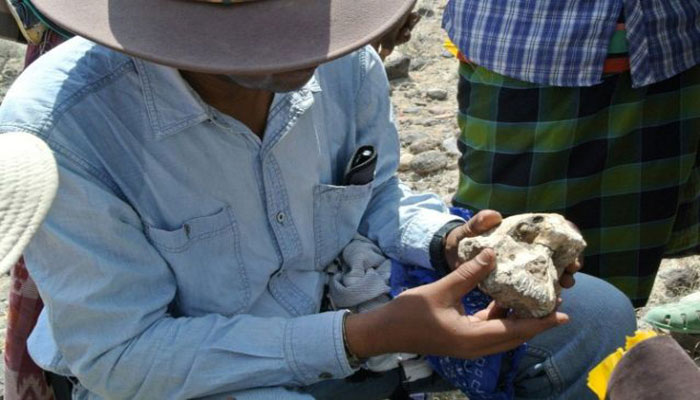Skull find in Ethiopia yields new clues on how humans evolved
The skull, known as "MRD", was discovered not far from the younger Lucy -- the ancient ancestor of modern humans -- and shows that the two species may have co-existed for about 100,000 years.
ADDIS ABABA: A "remarkably complete" 3.8-million-year-old skull of an early human has been unearthed in Ethiopia, scientists announced Wednesday, a discovery that has the potential to alter our understanding of human evolution.
The skull, known as "MRD", was discovered not far from the younger Lucy -- the ancient ancestor of modern humans -- and shows that the two species may have co-existed for about 100,000 years.
"This skull is one of the most complete fossils of hominids more than 3 million years old," said Yohannes Haile-Selassie, the renowned Ethiopian paleoanthropologist of the Cleveland Museum of Natural History who is a co-author of two studies published Wednesday in the journal Nature.
It "looks set to become another celebrated icon of human evolution," joining the ranks of other high-profile hominid findings, Fred Spoor of the Natural History Museum of London wrote in a commentary accompanying the studies.
"Toumai" (of the species Sahelanthropus tchadensis) is around 7 million years old and is considered by some paleontologists to be the first representative of the human lineage. It was discovered in Chad in 2001.
Ardi (for Ardipithecus ramidus, another species of hominid) was found in Ethiopia in 1994 and is believed to be around 4.5 million years old.
And Lucy, the famous Australopithecus afarensis, was discovered in Ethiopia in 1974 and is 3.2 million years old.
Australopithecus afarensis is one of the longest-lived and most studied early human species.
The new skull, MRD, belongs to the species Australopithecus anamensis.
Discovered in February 2016 at the site of Woranso-Mille, just 55 kilometres (34 miles) from where Lucy was found in the Afar region of northeastern Ethiopia, MRD offers "the first glimpse of the face of Lucy´s ancestor," according to a statement announcing the finding.
Other lesser-known Australopithecus fossils date back at least 3.9 million years, but they featured only jaws and teeth. Without the skull, scientists´ understanding of the evolution of these extinct hominids has remained limited.
-
Five key takeaways from the new Epstein files
-
H-1B visa: US judge rejects business Group’s challenge to Trump’s $100,000 Visa fee
-
Libyan army chief killed in jet crash: Initial cause revealed
-
Australia passes gun law & protest ban: What it means for public safety
-
Explosion at Pennsylvania nursing home leaves at least two dead, several injured
-
Epstein files: What did Ghislaine Maxwell say about Andrew?
-
Epstein files released: Thousands of new documents surface after Trump remarks
-
Mexican Navy plane crashes in Texas during medical flight, leaving five dead












